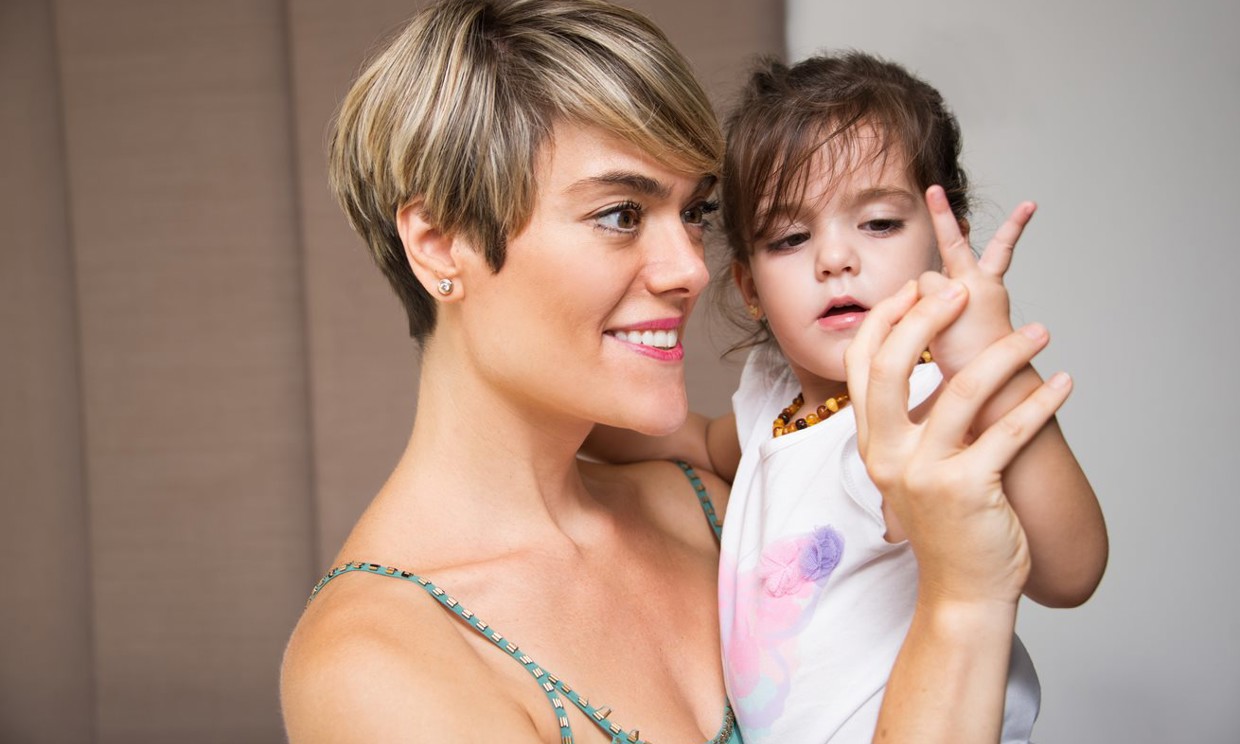Children’s brains are like sponges, soaking up the world around them.
As parents we are acutely aware of the importance of communicating with our babies early and often.
We all know we should be reading and singing to our children. Playing with them and interacting.
But what about addition and subtraction? When should we start helping our children learn the basics concepts of maths?
Goodstart Early Learning early learning consultant Sharon McKinlay said parents are probably doing more than they think.
“Maths is everywhere and your child has been developing math concepts and skills from the moment they were born,” she said.
“You are most likely using basic math language all the time without realising it. For example, changing nappies, meal and bath times, and shopping trips are ideal times to count, point out shapes and sizes, talk about patterns, and describe how things are the same and different.”
Early mathematics concepts like patterns, measurements and collecting and organising information can be introduced through play from an early age.
For example, baking a cake is a great way to introduce measuring ingredients and concepts of temperature and time.
Shapes are another great way to introduce geometry and the relationships between spaces and distance.
Parents can help children to recognise and name shapes and understand the physical relationship between themselves and other objects.
“Some examples of how you might introduce geometry to your child include- ‘Look, Jason went under the climber and Aliyah is on top.’ ‘You’re sitting next to your brother.’ ‘Some of the crackers we have today are square, and some are round’,“ Ms McKinlay said.
Another basic maths concept that can be used in our everyday conversations with young children that connects to their real life experiences is number and operations.
“Understanding the concept of number, quantity, order, ways of representing numbers, one-to-one correspondence (that one object corresponds to one number), and counting,” McKinlay said.
“So you might point out that your child has two eyes and so does their toy bear and then you can count them together; or you might talk about the food on their plate and that you have more grapes than they do and then you can count the grapes on each other’s plates and see what happens when you each eat a grape,” she said.
Other areas of maths that can be introduced through general play and interaction at home, along with some ideas or phrases to incorporate at home include:
Measurement, size, weight, quantity, volume and time
As parents we are acutely aware of the importance of communicating with our babies early and often.
We all know we should be reading and singing to our children. Playing with them and interacting.
But what about addition and subtraction? When should we start helping our children learn the basics concepts of maths?
Goodstart Early Learning early learning consultant Sharon McKinlay said parents are probably doing more than they think.
“Maths is everywhere and your child has been developing math concepts and skills from the moment they were born,” she said.
“You are most likely using basic math language all the time without realising it. For example, changing nappies, meal and bath times, and shopping trips are ideal times to count, point out shapes and sizes, talk about patterns, and describe how things are the same and different.”
Early mathematics concepts like patterns, measurements and collecting and organising information can be introduced through play from an early age.
For example, baking a cake is a great way to introduce measuring ingredients and concepts of temperature and time.
Shapes are another great way to introduce geometry and the relationships between spaces and distance.
Parents can help children to recognise and name shapes and understand the physical relationship between themselves and other objects.
“Some examples of how you might introduce geometry to your child include- ‘Look, Jason went under the climber and Aliyah is on top.’ ‘You’re sitting next to your brother.’ ‘Some of the crackers we have today are square, and some are round’,“ Ms McKinlay said.
Another basic maths concept that can be used in our everyday conversations with young children that connects to their real life experiences is number and operations.
“Understanding the concept of number, quantity, order, ways of representing numbers, one-to-one correspondence (that one object corresponds to one number), and counting,” McKinlay said.
“So you might point out that your child has two eyes and so does their toy bear and then you can count them together; or you might talk about the food on their plate and that you have more grapes than they do and then you can count the grapes on each other’s plates and see what happens when you each eat a grape,” she said.
Other areas of maths that can be introduced through general play and interaction at home, along with some ideas or phrases to incorporate at home include:
Measurement, size, weight, quantity, volume and time
- Moving that chair is hard. It’s heavy.
- Your nap lasted a long time today.
- Let’s count how many steps it takes to reach the mailbox.
- Daddy has stripes on his shirt—white, blue, white, blue, white, blue.
- Let’s clap to the beat of this song.
- I put the blocks in the bucket; you dump them out. I put the blocks back in the bucket; you dump them out!
- Our plant looks taller today. I think it grew overnight.
- Let’s put the big lid on the big bowl and the small lid on the small bowl.
- You always smile when Mummy sings to you!
- Let’s put the dolls in the basket and the balls in the box.


